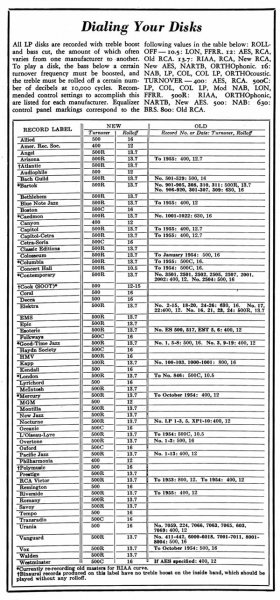I'm empathetic, Charles
I would not be at all surprised even if I had perfect room sonics, quantifiable and repeatable, that I might still introduce a high quality EQ --thinking GML, presently-- into the signal chain because I didn't find the recording, tracking/mixing/mastering...pleasing to my palate
Hello gentlemen,
I have been following this thread for a number of months and wish to add my own comments. I've been using equalization for over a year since I built a DIY version of the Cello Palette preampifier from parts found in a CT warehouse containing the "remains" of the Cello operation.
From reading the posts to this thread, it appears that the discussion so far has centered around the pros and cons of equalization to correct system and or room problems. When successful, the results are then applied in what I would call a "static" manner, to create what has been labeled as "digital (or analog) room correction".
Not much mention has been made of the manner in which I use the Palette - to perform "dynamic" corection to individual music selections or, more typically, whole albums. I "insert" the Palette when listening to a lot of what I will call popular digital (CD) music - especially that with female vocals. Now turning down the 2 and 5Khz bands by just a few dB or so removes enough "glare" on the voice that I can listen through a whole album instead of immediately switching to something different, as used to be the case. I call this the "subtractive" mode of operation; the "additive" mode is used when listening to older music, a lot of that produced in the 50's or early 60's, which apart from having little or no real bass, has little mid-bass. In this instance, turning up the equalization at 120 hz or so brings that spectrum and my overall enjoyment level "alive". Correction below that (at 20Hz) does little.
The big problem with applying this "dynamic" equalization relates to what I will call "ease of use". To make it really practical, you need to be able to control it quickly AND right from your listening position - and that's where the operational characteristics of every equalizer I've ever seen fall down. They all require you to get up; go to your equipment rack; fiddle with a control; then sit back down. In my case, I separated the equalizer portion of the Palette from the preamplifier function and mounted it in a "roll-around" right in front of my couch, with a 30ft umbilical that connects it back to the rest of the electronics. Now that I'm up the learning curve regarding how the controls change the sound, I can "equalize" a particular selection within the first few seconds, and then settle back to enjoy the music.
Thank you
Charles
I would not be at all surprised even if I had perfect room sonics, quantifiable and repeatable, that I might still introduce a high quality EQ --thinking GML, presently-- into the signal chain because I didn't find the recording, tracking/mixing/mastering...pleasing to my palate



